Home to rare and endangered species, the Congo’s national parks are also sites of human conflict. Without addressing the material drivers behind ecological degradation, conservation risks a losing battle. For Virunga, tackling socio-economic challenges facing local populations was a necessity in preserving its natural heritage.
A spate of killings of Virunga’s mountain gorillas in 2007 changed Emmanuel de Merode’s – the director of the Virunga National Park – thinking about conservation. The gorillas, among the last several hundred on earth, were being killed to clear the way for charcoal production. Attackers figured that park rangers would have no reason to patrol the park without gorillas to protect.
“It forced us to re-examine what was happening – not just in, but around the park,” said de Merode. “It was no longer an issue of just protecting wildlife – the underlying causes were tied to issues of extreme poverty, regional instability and governance of natural resources.”
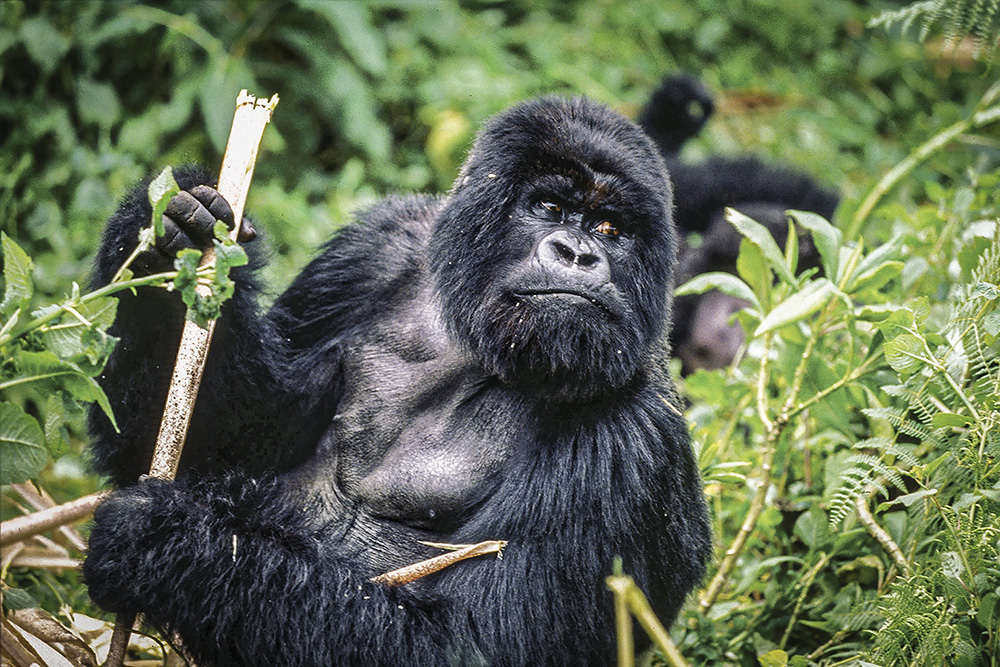
The Virunga National Park, in eastern Democratic Republic of the Congo, is home to the critically endangered mountain gorillas
Addressing the drivers behind the violence required more resources and expertise than Virunga could provide on its own – and that's how the Virunga Alliance was born. “It’s an attempt to work with civil society, the private sector and other government institutions, to create a new economy in North Kivu,” said de Merode. “That’s the way to overcome the problem.”
The park encompasses 7,800-square-kilometres of forests, lakes and volcanoes on DRC’s eastern border with Uganda and Rwanda. Preserving this UNESCO World Heritage site presents an environmental imperative - while this requires international coordination, it’s the local communities that bear much of the immediate cost.
With 4 million people living within a day’s walk of the park, Virunga’s periphery is one of the most densely populated rural areas in Africa. Each acre of fertile volcanic soil that remains unfarmed represents close to $700 USD per year in foregone revenue for locals, explained de Merode. The cost of conservation – when looked at in these terms – runs into the billions.
Armed groups in the DRC are well aware of the natural wealth the land represents – during decades of conflict, it has served as both a hide-out and a resource-bank for their activities. Their main revenues, de Merode said, come from illegal charcoal production (worth $34 million a year), illegal fishing on Lake Edward (estimated at 12,000 tons of fish each year), and poaching wildlife for bushmeat. The park is estimated to provide above $100 million a year in illegal revenue – enough to support an army, or several.
The Virunga Alliance’s vision of conservation places an emphasis on peace-building and social justice, as much as on ecology. By improving local infrastructure, social services and economic opportunities, the Virunga Alliance aims to provide a long-term solution to violence in the region.
|
The cross-border dimension Conservation needs to be addressed transnationally to be truly effective – parks extend across borders, and so do the migration patterns of wildlife. “When one country makes the effort but its neighbour doesn’t, it comes to almost nothing,” said Omer Ntougou, Executive Secretary at the Network of Protected Areas of Central Africa (RAPAC). RAPAC works with 10 Central African countries – Cameroon, Central African Republic, Chad, Congo, DRC, Equatorial Guinea, Gabon, Sao Tomé & Principe, Rwanda, and, soon, Burundi – to present a harmonised conservation strategies. Ntougou explained that challenges for conservation range from difficulties in operating with minimal state resources to overcoming the negative perception among citizens. “People feel that states invest more in elephants than in their own health,” he said. Watch Ntougou share his insights on conservation, including on the role of public-private partnerships (such as Virunga) and how local communities can be involved in anti-poaching projects: |
A third of the park’s revenues go towards community-defined needs, such as building schools, health centres, water facilities and roads, with a goal of creating 100,000 jobs for local people. By investing in people in a way that doesn’t threaten the environment and encompasses the needs of the poorest, the Alliance hopes to bring stability back to the park and to those that live around it.
Sustainable jobs and hydropower
Virunga is in the third and final phase of an economic development plan supported by the EU and other partners, launched soon after the appointment of de Merode in 2008. To provide people with alternative revenue to poaching and other destructive practices, getting capital flowing in was a must.
One of the most important elements to this has been a focus on tourism. While the sector was first developed with EU funding in the 1980s, armed conflict between the M23 rebel group and the Congolese military in 2012 put a halt to any activities. These weren’t relaunched until their 2014, following the end of hostilities.
“Tourism is a traditional industry for a protected area,” de Merode said. Virunga has much to offer: Intrepid visitors can hike up Nyiragongo volcano and trek through rainforests and encounter wildlife – from mountain gorillas to okapi. In addition to creating jobs in hospitality, he added, tourism can generate income for local communities through private transport, handicrafts and commerce.
Despite security risks from armed groups, Virunga welcomes around 10,000 tourists a year. Bringing in a revenue of around $4 million, this figure is expected to keep rising by 40% each year. This income, combined with the infrastructure put in place for tourism, has helped kick-start other economic sectors, including clean energy and agricultural transformation.
Virunga’s piloted its first hydro-electric plant in the northern city of Mutwanga in 2010. The plant is a run-of-the-river station – based on the diversion of river waters, for just a few hundred meters – creating a lower environmental impact than setups that require dams or flooding.
After the success of the first plant, the construction of larger ones was started in Lubero and Rutshuru. “The potential is huge,” de Merode said. “The plants produce 105 Megawatts, about 26 times the production of the entire province.”
Electricity for schools and hospitals is already being provided by the Mutwanga hydroelectric facility, though households and businesses need to pay for the service. The dramatic increase in electrical production, matched to a rural electrification project supported by the EU and Belgium, is expected to bring electricity to 10,000 households and 1,000 SMEs.
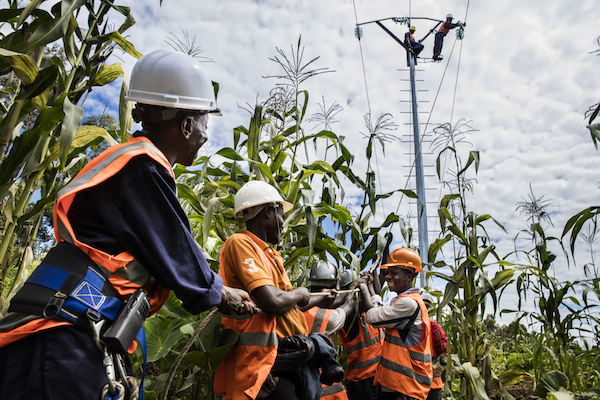
The dramatic increase in electrical production around Virunga is expected to bring electricity to 10,000 households and 1,000 SMEs © European Commission
It’s not all about energy, either. The plants will have significant impacts on livelihoods and contribute to agricultural transformation in the region, de Merode said. While the plants themselves might only employ 50-60 workers, available energy means that businesses will become easier to set up, and more profitable.
From palm oil processing plants to artisanal corn mills, there has already been an increase in entrepreneurial ventures. Hydroelectricity is further expected to benefit the fishing industry around Virunga’s Lake Edward by enabling investment in refrigeration along the supply chain, thus increasing the size of the market.
“It’s about the transformation of resources,” said de Merode. Eastern Congo has an abundance of natural wealth, but growth will depend on the development of a localised processing industry. “Value is secured elsewhere – essentially, for the foreign shareholders.”
Cheap green energy will change this, de Merode added. “We have $300 million of investment in the energy sector, which will precipitate over $1 billion in agricultural transformation.”
|
Virunga and Oil Charcoal has caused its share of problems, but isn’t what Virunga is best known for. Detailed in the 2014 documentary, Virunga, the oil exploration activities within the park’s borders sparked a long and bitter struggle for the future of the park which made international headlines. Watch Emmanuel de Merode reflect on the five-year struggle against the oil company Soco International, the wider issues of corruption and security, and the impact these have had on tourism: |
The conservation implications are far reaching – the clean energy provided through these investments provides an alternative to charcoal, one of the major causes of deforestation and an important source of revenue for armed groups.
“We’re at about 4,000 jobs now, and it’s beginning to take off. There is a long way to go, but one positive sign is the flow of people from armed groups to gainful employment. About 5 to 10% of the new jobs go to ex-combatants. It really is a demonstration of how a clean, green economy brings stability.”
If the hydroelectric plants reach their goal of generating 100,000 jobs, they would offer alternative employment to each of the estimated 5,000 militiamen in the area. “If it’s offered to them,” de Merode said, “people will always choose to support their family and earn a living, instead of violence.”
Lessons learned
The EU has been supporting parks in Africa for over 20 years, with support for Virunga dating back to 1988 – with this year marking the 30th year anniversary. “Subsidies have allowed us to launch the programme and cover the cost of R&D work, which is difficult to do in these conditions,” said de Merode, adding that EU grants can act as a catalyst, drawing in complimentary and instrumental investment from private foundations, such as the Buffet Foundation, being the second largest donor of funding after the EU, and public lending institutions alike.
For the European Commission, the Virunga Alliance has proven to be a challenge, though one with successes that can be championed and learned from. “Providing an alternative economic pattern that can stabilise a region is fascinating,” said Chantal Marijnissen, Head of Unit for Environment, Natural Resources and Water at DG DEVCO. “We can see which pieces we could take and replicate in other countries."
“It combines the expertise of our thematic Unit on environment, the geographic Unit for Central Africa and the EU Delegation in DRC,” she said. “It shows how DEVCO can work out of silos, collaborate and bring together our knowledge of different sectors; how we can help stabilise a whole region through what are, at base, environmental projects.” Indeed, DEVCO Units on Energy, Financial Instruments, and Security have all played an active role.
|
Watch Chantal Marijnissen reflect on the Virunga model and the potential of conservation beyond animal protection and environmental issues: |
Virunga has shown that conservation and development are inherently linked. “Environmental projects will only work if we make sure we provide security for the populations around the parks; reduce the impact of the militia on the local populations, and create jobs,” Marijnissen said.
Another take-away has been that substantial progress can be made during times of conflict, as long as the right support is in place. “The construction of the second hydroelectric plant started under artillery fire during the M23 conflict,” said de Merode. “But we had a motivated team, and the plant was built within the specified deadlines and within budget. The lesson is that it’s possible, with the right approach and commitment.”
“Fortunately for us, our main donor, the EU, has been very understanding of that need. It’s when the risks are highest that we need the most support,” he added. “This explains, more than anything else, the success of the programme – its continuity now for over 12 years in rolling out these programmes.” As of now, the progress is still going strong.
|
Conservation in the midst of conflict John Barret, General Manager at the DRC’s Garamba National Park, spoke to Capacity4dev about the challenges facing his park – the ones held in common with Virunga, and those that are different. Find out more: http://europa.eu/!wW74uf |
This article was written by Sophie Lewisohn, with input from Capacity4dev's Editorial Team.

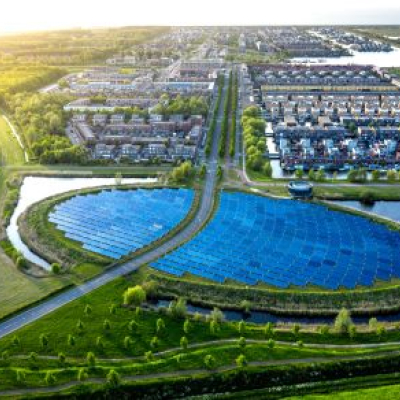
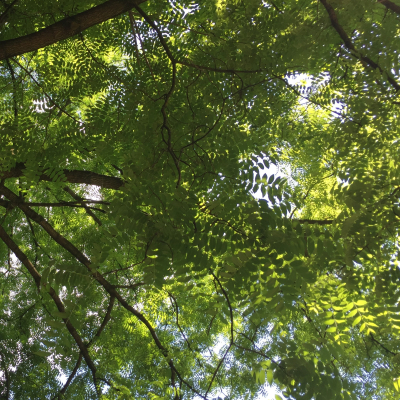
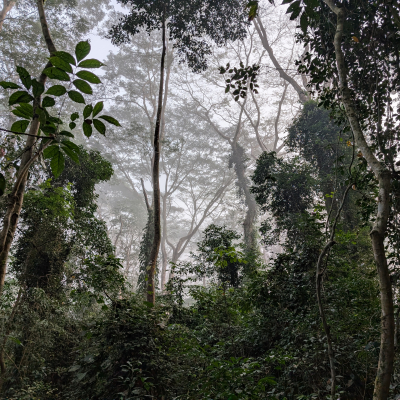

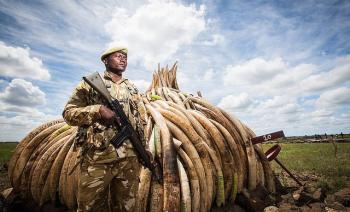

(1)
Log in with your EU Login account to post or comment on the platform.
Thank you for this article, especially in a very delicate moment for Virunga, it is important to kkep the attention high on what it is happening in this corner of the world and keep protecting it.